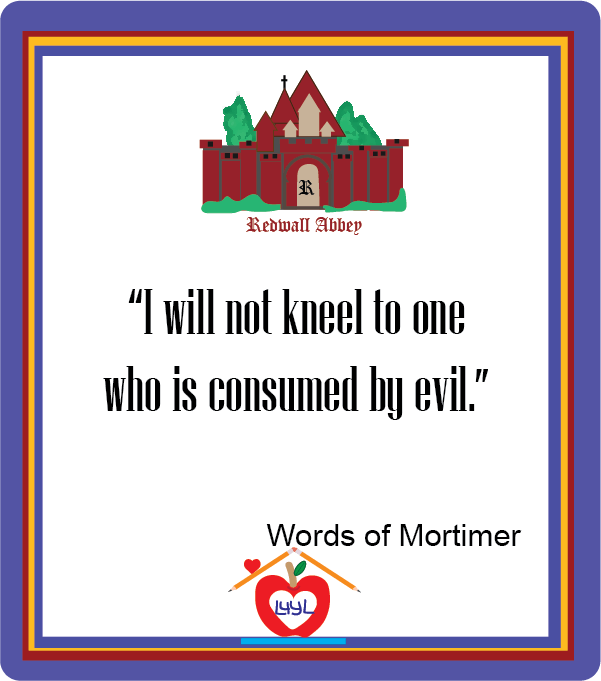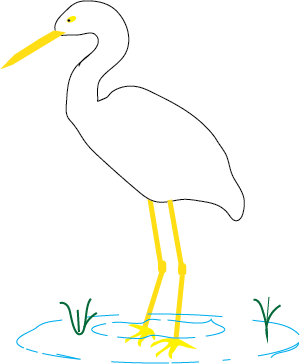Redwall Unit Study
Fifth to eighth grade students will enjoy Redwall, the famous animal fable by Brian Jacques. Our unit study provides chapter by chapter activities that guide a student to write their own animal fable.
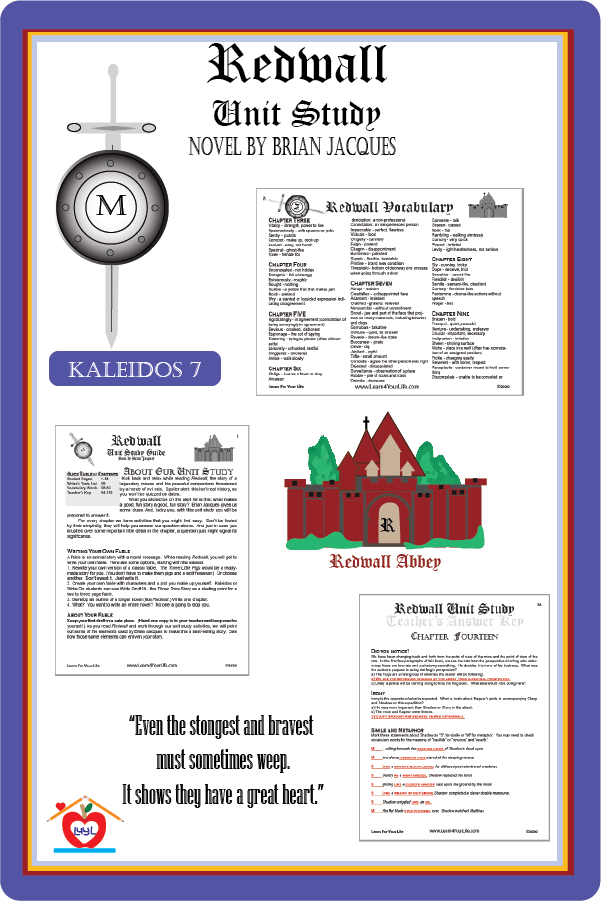
Buy Redwall Unit Study
Download the activities and vocabulary for the 58 chapters of Brian Jacque's famous animal fable.
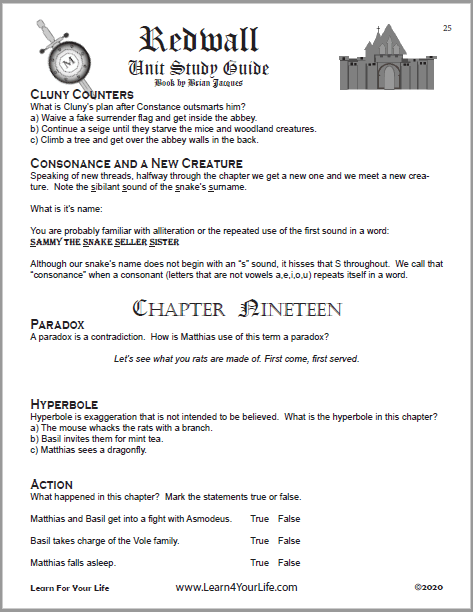
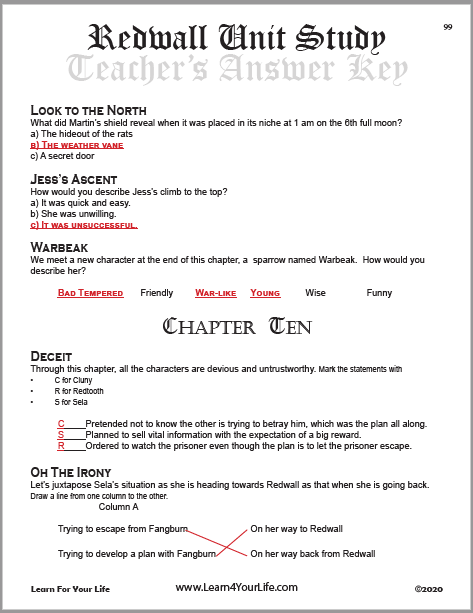
Student Guide AND Teacher's Answer Key Included
$2.99 Download - 119 pages
![]()
Student Activities
Our Redwall Unit Study Guide includes these activities to guide 5th to 8th graders through Book 1 of the Redwall series:- Chapter-by-chapter activities
- Analysis of literary elements
- The Anatomy of a good story
- Step by step guidance in writing their own animal fable
- Vocabulary words and concepts
Literary Elements and Animal Fables
Students start by writing their own simple animal fable. (It might be as simple as a one paragraph version of The Three Little Pigs.) We give ideas on different ways of doing this.As readers enjoy the picturesque writing of Brian Jacque's colorful tale, they analyze the literary elements he used. Soon their own animal tale is shimmering with metaphors, alliteration, polyptoton, internal dialogue, interesting interjections and much more.
See the chapter activities below to see how these elements are woven into the unit study.
Vocabulary
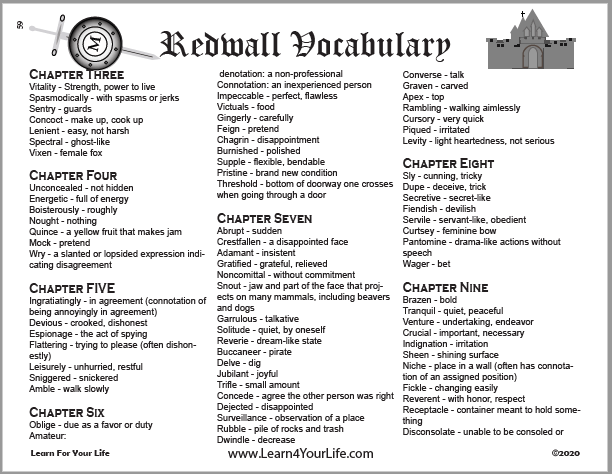
The Redwall Vocabulary Word Lists provides words and their definitions in the order they appear in the chapter. Our handy three-column lists make great bookmarks to boost students' comprehension as they read.
Chapter Activities for Book One
Prologue
- Determine the setting.
- Become acquainted with the map.
- Look at a compound sentence that describes Mossflower.
Chapter One
- Describe the main character, Matthias.
- Identify the hero, Martin.
- Explain the mission of the Abbey.
- Investigate the use of anthropomorphism in the story.
- Outline your own story with setting and characters.
Chapter Two
- Describe the antagonist.
- Identify the perspective.
- Evaluate the mood and character of Cluny.
- Describe the followers of Cluny.
- Outline an antagonist for your story.
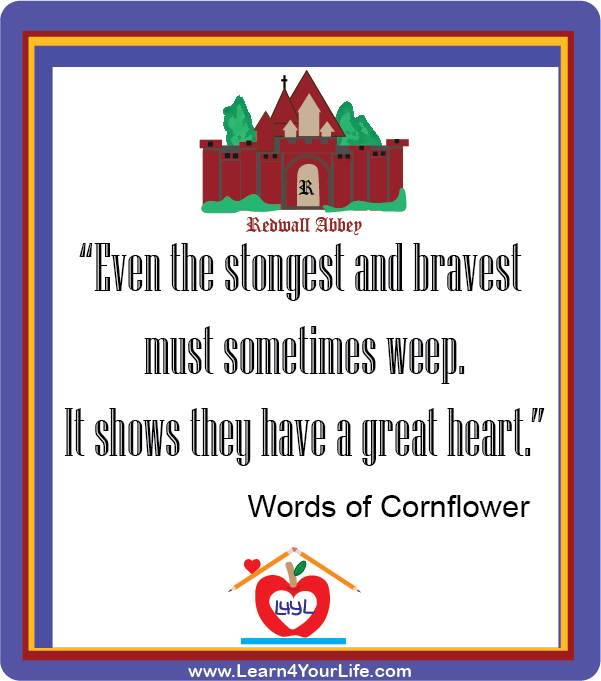
Chapter Three
- Identify other characters.
- What event calls the woodland creatures to the abbey?
- Outline character qualities of a few other creatures in your own story.
Chapter Four
- Analyze descriptive names.
- Find examples of onomatopoeia.
- Practice reading orally with emphasis.
- Compare connotation and denotation.
- Critique Cluny's reaction to Skullface's death.
- Weigh the effect of the author's language choices on the original hearers. (School for the blind.)
- Develop your own descriptive names and sentences with onomatopoeia.
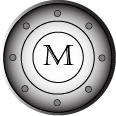
Chapter Five
- Consider the impact of age in this story.
- Identify the origin of Methuselah's name.
- Locate anthropomorphisms in the text.
- Recognize mood and clues that indicate it.
- Evaluate the juxtaposition of mood and position in the story.
- Identify and contrast command and second-in-command for mice and rats.
- Develop your own sentences using anthropomorphism, allusion, juxtaposition, or mood
Chapter Six
- Analyze the impact of a strong simple sentence.
- Investigate Cluny's creative insults.
- Examine how a character's personality is demonstrated by their actions or speech.
- Incorporate simple sentences, creative dialogue, and speech or action that demonstrates character into your own narrative.
Chapter Seven
- Appraise the use of a legend or bogeyman created specifically for a tale.
- Recognize similes.
- Identify the two main threads in this story.
- Develop a seperate thread, a new legend, or a simile in your own tale.
Chapter Eight
- Identify foreshadowing.
- Identify flashbacks.
- Review common figures of speech.
- Include foreshadowing or a flashback in one's own story.
Chapter Nine
- Identify the Main Conflict
- Evalute the role of Martin
- Develop descriptive Lists
- Create contrasting statements
Chapter by chapter activities to accompany Brian Jacque's story of Redwall.
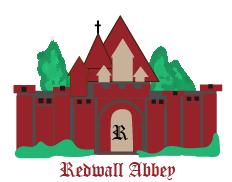
Chapter Ten
- Sketch Cluny from his physical description.
- Identify the mouse in Cluny's dream.
- Compare similes and metaphors.
- List the actions of Matthias in this chapter.
- Develop a physical description, protagonist actions, and simile or metaphor for your writing.
Chapter Eleven
- Develop unique figures of speech for a character in a particular setting.
- Contemplate Matthias' dilemma.
- Ponder Cornflower's words and her action of giving Matthias her headband.
Chapter Twelve
- Describe Shadow. Compare his name, physical features, and personality.
- Create an action plot for a story that connects the initial situation and the final outcome.
Chapter Thirteen
- Review picturesque sentences, anthropomorphisms, and metaphors.
- Identify Martin's goal.
- Consider what information he obtained from Methuselah.
- Contemplate the role of the antagonist's goal in a story.
Chapter Fourteen
- Give an example of irony from the chapter.
- Contrast numerous examples of simile and metaphor.
- Contemplate the descriptions of Shadow.
- Identify the main event in this chapter on the action plot.
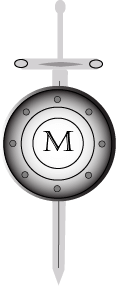
Chapter Fifteen
- Identify Martin's plan and sub-plans.
- Study a complex sentence. Use it as a model sentence.
Chapter Sixteen
- Study prepositional phrases
- Appraise the fate of the vole family and the tapestry.
Chapter Seventeen
- We meet and analyze Mr. Basil Stag Hare.
- Consider character development of Matthias
- Assess the effectiveness of literary elements:
- Irony
- Juxtaposition
- Dialect
- Internal Dialogue
- Interesting interjections
- Contrasting phrase
- Contrast connotation and denotation in vocabulary words.
- Note the suspenseful end to a chapter
Chapter Eighteen
- Track the different threads. Note splitting and joining threads.
- Identify Constance's plan and Cluny's counter plan.
Chapter Nineteen
- Describe a paradox.
- Recognize hyperbole.
- Incorporate irony, hyperbole, or paradox into one of your paragraphs.
Chapter Twenty
- Contrast understatement and exaggeration.
- Investigate the use of internal dialogue.
- Examine the character quality of jealousy among protagonists and antagonists.
- Give examples of how the protagonists use their strengths to help one another.
- Contemplate the division of chapters by Book.
- Appraise the title of Book One: The Wall
- Identify Methuselah's action that ends Book One.
Book Two
The Quest
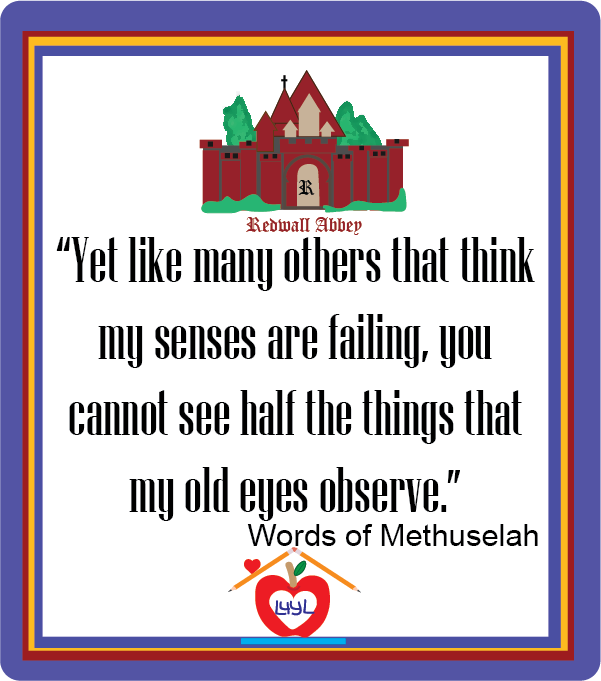
Students learn the defintion and parts of a quest while journeying with Martin as the sword stays one adventure away from his grasp.
Book Three
The Warrior

The warrior of the final book is a different character from the novice in the first book. Readers consider how the parts of a story come together through the climax, falling action, and denoument.
Redwall Themes, Symbols and Genres
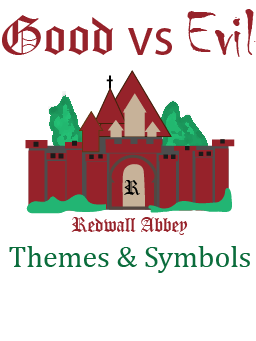
Redwall's Themes, Symbols, and Genres are also discussed in the unit study. Click the pic above to learn about
- Themes and sub-themes (Good vs Evil)
- Symbols (Abbey, Rose, Sword)
- Genres (Fable, Quest, Coming-of-Age
Buy Redwall Unit Study
Download the activities and vocabulary for the 58 chapters of Brian Jacque's famous animal fable.


Student Guide AND Teacher's Answer Key Included
$2.99 Download - 119 pages
![]()
